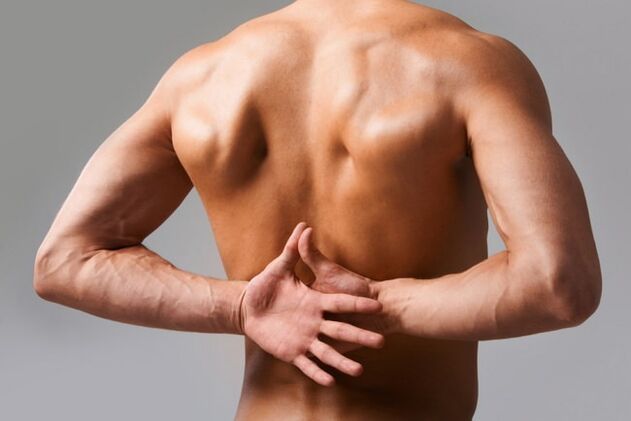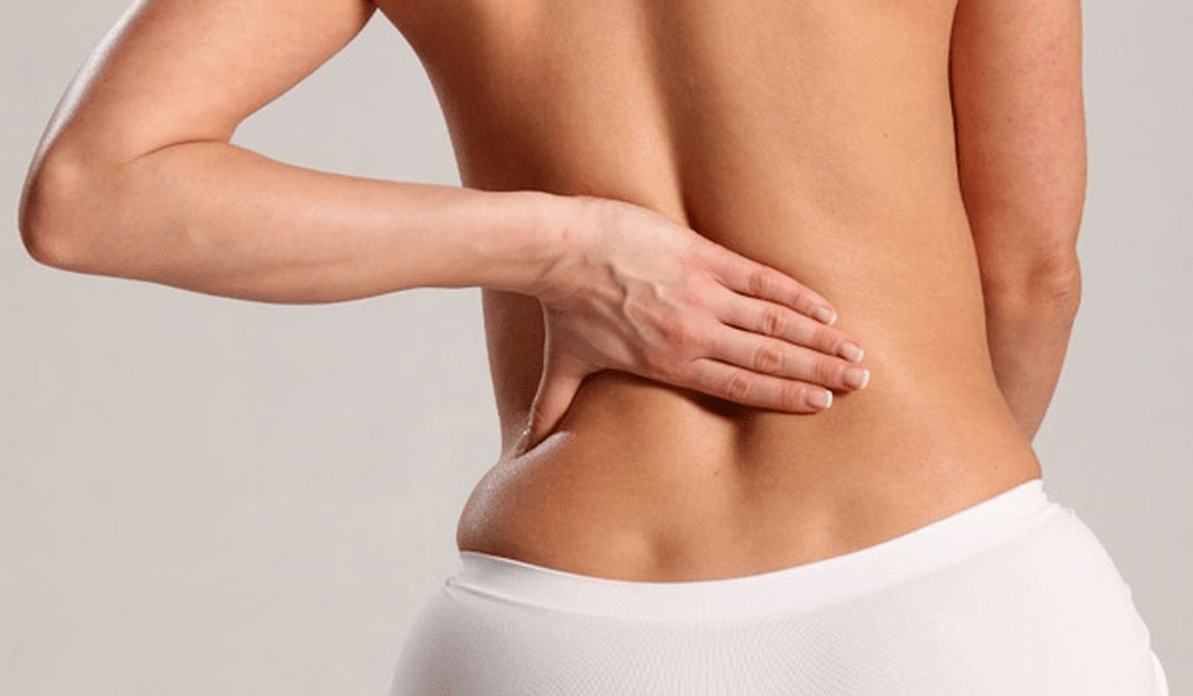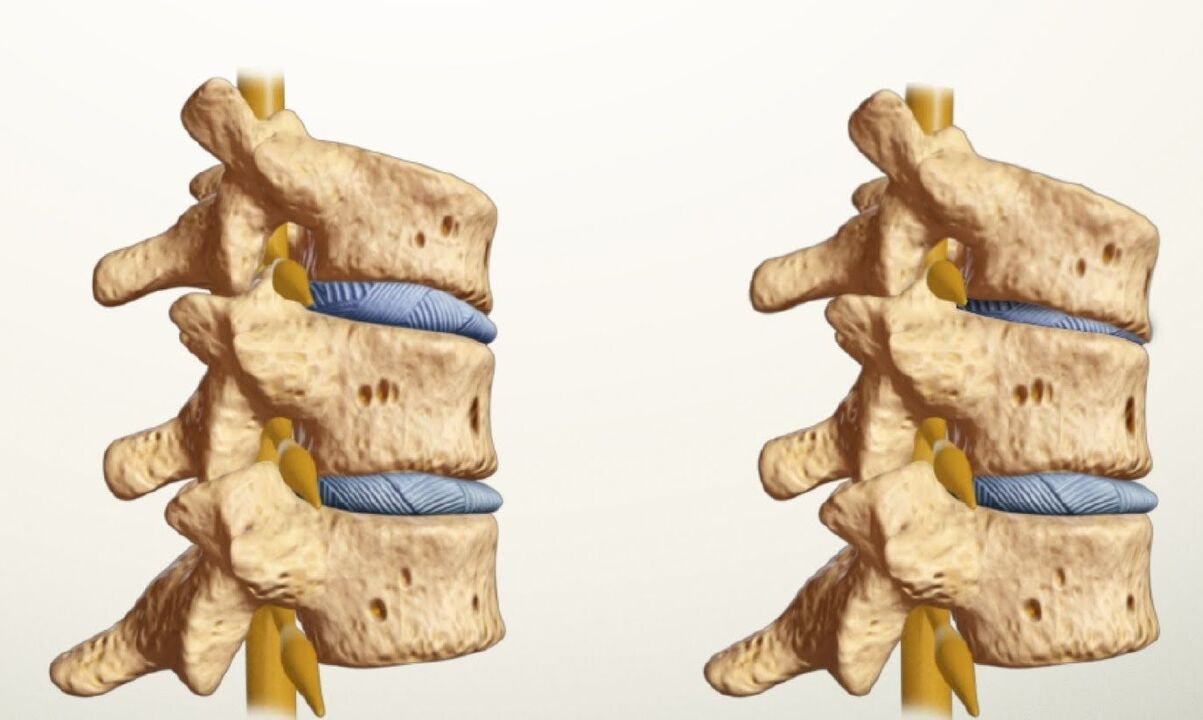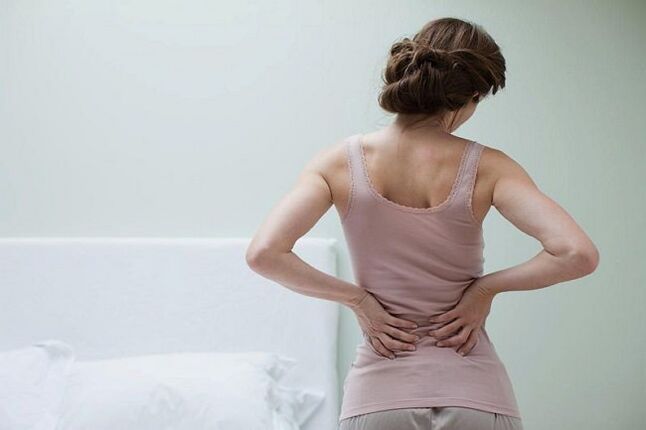Lumbar osteochondrosis is a pathological change in the cartilage and bone tissue of the intervertebral discs in the lumbar-sacral spine. This change can be the result of a natural or unhealthy lifestyle. In old age, all people begin the process of involution of bone and cartilage tissue. However, when these events occur prematurely (seen in middle-aged people), then we are talking about pathological processes in the skeletal system. The pathology affects both men and women over 30 years of age.
Lumbar osteochondrosis is the most common and common disease of the spine, manifested by severe pain in the lower back. The disease develops as a result of metabolic disorders, which lead to inadequate nutrition of cartilage and bone tissue, and waste products accumulate in bone cells. This leads to pathologies of the intervertebral discs. In addition, their thickness and elasticity change, followed by growths in the form of osteophytes in the vertebrae (growth of bone tissue that causes the narrowing of the holes for the nerve endings).
Causes of the development of lumbar osteochondrosis
Lumbar osteochondrosis is more common than osteochondrosis of the thoracic or cervical spine because the lower back has the greatest load during walking and running, sitting in a chair for long periods of time, or lifting weights.

Because this anatomical area carries maximum load, its structure is very strong and reliable. The lumbar region consists of five vertebrae and connects the ribs with the sacrum. Among them are intervertebral discs that give elasticity and mobility to the spine. In turn, the intervertebral discs consist of a jelly-like nucleus located inside the hard annulus fibrosus. When osteochondrosis develops, the normal nutrition of the discs is disrupted, as a result of which they become thinner, lose their elasticity, and the distance between them decreases. As a result, nerve roots are damaged, leading to severe pain and even disability.
Thus, the reasons for the development of this pathology are:
- spinal cord injury;
- diseases of the endocrine, digestive and cardiovascular systems;
- intense physical activity (lifting weights, heavy running);
- sedentary lifestyle;
- hormonal system dysfunction;
- straight legs;
- anomalies of the intervertebral discs;
- old age;
- Inflammatory diseases of the joints, such as rheumatoid arthritis.
Risk factors for the development of the disease are:
- bending and poor posture;
- wrong lifestyle;
- unhealthy diet, obesity;
- to be in the wrong position for a long time;
- hereditary factor;
- stress;
- hypothermia.
The main symptom of the disease is back pain. It can be felt immediately or after intense physical activity.

Other symptoms of lumbar osteochondrosis:
- aching pain that spreads to the lower back;
- increased pain after lifting weights, sneezing, coughing, moving the body;
- stiffness in the body after staying in one position for a long time;
- persistent spasms of the back muscles;
- sudden pain (lumbago) after hypothermia of the body;
- sensitivity of the hips, thighs, lower legs and feet;
- paresis of the legs;
- cold feet;
- spasm of the vessels of the legs;
- excessive sweating;
- dryness and peeling of the skin at the sites of pain.
Lumbar osteochondrosis can be exacerbated by any awkward movement, such as turning the body to the side or turning it. In this case, the pain is noted not only in the lower back, but also in the legs. There is also a strong spasm of the lumbar spasm, because in this way the body relieves the load on this part of the body. During an exacerbation, a person finds a comfortable position in which the pain is reduced.
One of the complications of lumbar osteochondrosis is a malfunction of the genitourinary system. Sometimes there is an increase in urination and discomfort in the kidneys. Inflammation of the sciatic nerve and lumbodynia (pain in the lower back) may be associated with the disease.
Stages of lumbar osteochondrosis
Unfortunately, osteochondrosis is an incurable disease, and the process of destruction of intervertebral discs is irreversible. There are four degrees of development of osteochondrosis:

- The first degree in which the jelly-like nucleus inside the disk changes and moves.
- The second degree is the period of destruction of the annulus fibrosus in the disc;
- In the third degree, the rupture of the annulus fibrosus and the leaving of the jelly-like nucleus cause the formation of a herniated disc.
- The fourth degree is the period of development of degenerative processes of the vertebrae with the participation of intervertebral joints and ligaments. Osteoarthritis of the intervertebral joints (spondyloarthritis) develops.
First degree
Annulus fibrosus and is characterized by painful sensations due to irritation of nerve endings located in the longitudinal ligaments. The patient feels pain and discomfort in the affected disc area. The pain can be sharp, sharp or dull, persistent and localized in the lumbosacral segment. Very often it gets on the feet and sometimes it is felt only on the feet.
Irritation of nerve endings leads to the development of reflex syndromes. For this reason, a person does not always feel pain in the problem area, but it is far from it. There is also a violation of the robots of the internal organs, the formation of reflex muscle spasms; circulatory disorders in the limbs and joints. Impaired blood circulation and nutrition of tendons and ligaments, causing pain and induration at the sites of adhesion to the bones.
Second degree
At this stage, there is a characteristic instability and an increase in vertebral mobility, which leads to continuous lubrication of the muscles. At the same time, it is difficult for a person to stand, he feels discomfort and pain in the lower back. Sometimes the lower back "hurts" and the patient does not understand why.
Third degree
It is characterized by prolapse of disc fragments manifested by compression of nerve roots. During this period, there is a disturbance of sensitivity in the innervation zone of the compressed nerve. In addition, there are unpleasant sensations in the form of tingling, burning, numbness, as well as a complete loss of sensitivity, which is accompanied by impaired motor function, sometimes leading to paralysis. Muscle atrophy, thinning and reduction are observed in the affected area. The areas where the changes described above are clearly visible are the location of the spinal cord injury. A characteristic manifestation of the third degree is the appearance of Lasegue's symptom. It manifests itself as follows: when the patient lies on his back, lifts a straight leg up, there is severe pain in the lower back, which spreads along the back of the raised leg. When the legs are bent at the knees, the pain immediately decreases.

When fragments of intervertebral discs fall into the lumen of the spinal canal, the spinal cord is damaged. Another syndrome, the so-called ponytail, manifests itself in impaired sensitivity and motor function of the legs, as well as the pelvic organs and bladder.
Fourth degree
This period is characterized by the disappearance of pain and the restoration of the musculoskeletal system. However, at the same time, there is a limitation of motor function. The spine is almost wooden, because disc fibrosis develops and all its elements are replaced by dense scar tissue. At the same time, the intervertebral ligaments and joints are involved in the inflammatory process, and different degrees of disease are observed, manifested by a polymorphism of symptoms.
How to treat lumbar spine osteochondrosis
Treatment of lumbar osteochondrosis is a very long and continuous process. Most importantly, much depends on the person himself for the successful treatment of the disease. After all, he will have to change his lifestyle and get rid of many habits, and he will have to work on his health for the rest of his life.
Otherwise, even successful drug treatment will not completely eliminate the deformity of the spine. In addition, after a temporary improvement, the symptoms will return with a new intensity and treatment should be restarted. Although sometimes osteochondrosis attacks occur, even with adherence to a physical activity regimen.
Thus, the treatment of osteochondrosis is carried out in 3 ways:
- conservative drug treatment;
- non-medicinal;
- surgery.
Conservative drug treatment
Since osteochondrosis of the spine cannot be completely cured and is an irreversible process, the goal of conservative treatment is to eliminate the symptoms and prevent further development of the disease. Physical activity should be minimized before starting drug treatment. Bed rest is recommended during severe exacerbations. This is sometimes more effective than medication.
Use to relieve signs of inflammation:
- NSAIDs (non-steroidal anti-inflammatory drugs). Drugs of this group effectively eliminate pain and inflammation in the vertebrae. Medications can be in the form of pills or injections.
- Glucocorticosteroids. These drugs are classified as steroid hormones. Injections with glucocorticosteroids are given directly into the joint space. They are definitely supplemented with B vitamins (B1, B6, B12).
- Sedatives. They are needed to overcome reflexogenic and associated psychogenic disorders.
- Anticonvulsants. Eliminate involuntary contractions of skeletal muscles.
- Antidepressants. Drugs of this group affect the level of neurotransmitters, as a result of which the patient's mood improves, melancholy, anxiety and emotional stress disappear.
- Diuretic drugs. They are necessary for the symptoms of radical syndrome.
- Anticholinesterase drugs. Drugs of this group inhibit the activity of the enzyme cholinesterase, resulting in increased conduction of nerve impulses.
- Chondroprotectors. Needed to prevent deformation of vertebral discs and joints.
In an acute attack, novocaine blockade is prescribed (injection of anesthetic drugs directly into the affected area).
Symptoms of lumbar osteochondrosis in women are different from those in men. In women, the menstrual cycle can be disrupted, and gynecological diseases can develop: inflammation of the ovaries and uterus (endometritis). Reproductive disorders can also occur. In this case, you need the help of a qualified gynecologist.
How to treat lumbar osteochondrosis at home
The main principle of home treatment is to eliminate the symptoms that prevent a person from leading a quality lifestyle.
The following treatments are used at home:
- Diet. Very often, the cause of osteochondrosis is the accumulation of cholesterol and loss of vascular elasticity. To correct the situation, you need to follow a low-fat diet. Also exclude foods high in cholesterol from the diet: eggs, pork, rich broths, chicken skin. Eliminate alcohol and nicotine completely, reduce coffee and strong tea consumption. They cause vasospasm.
- Restoration of blood supply in the lumbar region. To do this, use both rubbing with medicated ointments and compresses, as well as physiotherapy exercises that can be performed at home.
- Orthopedic sleep aids. The human spine needs proper rest because it is the axis of the human body, which is under great stress during the day. In this ability, orthopedic mattresses and pillows are able to give the spine the correct position during sleep.



































